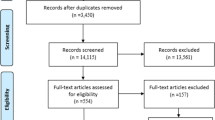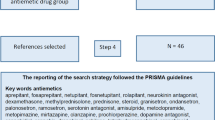Summary
Dose escalation of chemotherapy has been shown to improve the prognosis of various malignancies; however, these therapies are associated with considerable morbidity requiring the use of intensive care medicine in some of these patients. The objective of this study was to assess the prognosis of cancer patients treated in an intensive care unit (ICU) and to identify clinical parameters which are predictive for their outcome. We performed a retrospective analysis of charts from 94 cancer patients admitted to an ICU over a five-year period. From these 94 cancer patients, 64 patients had a hematological malignancy, while 30 patients had a solid tumor. Ninety-two patients (98%) had already been treated with chemotherapy. The main reasons for ICU transferal were respiratory failure (49%), sepsis (21%), bleeding complications (7.4%), and cardiac decompensation (6.4). Mechanical ventilation and vasopressor therapy (noradrenaline, dopamine) were required in 68% and 66% of patients, respectively. The ICU and the in-hospital mortality rate was 55% and 67%, respectively. In multivariate regression analysis, respiratory failure requiring mechanical ventilation, serum level of lactate dehydrogenase, and multiple organ dysfunction assessed by the SOFA score were predictive for intensive care mortality, whereas respiratory failure requiring mechanical ventilation, multiple organ dysfunction assessed by the SOFA score, and the remission status of the underlying malignancy were predictive for overall survival. In conclusion, the main risk factors for death in an ICU are respiratory failure and multiple organ dysfunction, while the prognosis of the underlying malignancy becomes relevant for the long-term survival.
Zusammenfassung
Hintergrund
Eine Heilung von Tumorpatienten ist häufig nur mit risikoreichen Therapiestrategien möglich. Hierbei können lebensbedrohliche Nebenwirkungen auftreten, die eine intensivmedizinische Behandlung erforderlich machen. Das Ziel dieser Arbeit war es, die Prognose von Patienten mit einer malignen Tumorerkrankung, die intensivmedizinisch behandelt werden mussten, zu bestimmen und prognostische Faktoren zu ermitteln.
Methode
Retrospektiv wurden die Krankenakten von 94 Patienten mit einer malignen Tumorerkrankung ausgewertet, die in einem Zeitraum von 5 Jahren intensivmedizinisch behandelt werden mussten.
Ergebnisse
Von 94 Tumorpatienten hatten 64 eine hämatologische und 30 eine solide Tumorerkrankung. 92 Patien- ten (98%) waren chemotherapeutisch vorbehandelt. Die Gründe für die intensivmedizinische Behandlung waren respiratorische Insuffizienz (49%), Sepsis (21%), Blutungen (7.4%) und kardiale Dekompensation (6,4%). Eine Intubation mit maschineller Beatmung war bei 68% der Patienten erforderlich und 66% der Patienten benötigten kreislaufunterstützende Medikamente (Noradrenalin, Dopamin). Die Letalität während des intensivmedizinischen Aufenthaltes und während des gesamten Krankenhausaufenthaltes betrug 55 bzw. 67%. In der multivariaten Regressionsanalyse waren respiratorisches Versagen mit der Notwendigkeit der maschinellen Beatmung, eine erhöhte Konzentration der Laktatdehydrogenase im Serum und multiples Organversagen gemessen mit dem SOFA-Score unabhängige ungünstige prognostische Faktoren für die Letalität auf der Intensivstation. Respiratorisches Versagen mit der Notwendigkeit der maschinellen Beatmung, multiples Organversagen gemessen mit dem SOFA-Score und der Remissionsstatus der zugrunde liegenden Tumorerkrankung waren prognostisch signifikant für das Gesamtüberleben.
Schlussfolgerung
Respiratorisches Versagen und multiples Organversagen sind die bedeutsamsten unabhängigen prognostischen Faktoren für die Letalität während des Aufenthaltes auf der Intensivstation, während der Remissionsstatus der zugrunde liegenden Tumorerkrankung die Langzeitprognose beeinflusst.
Similar content being viewed by others
References
Antonelli M, Conti G, Rocco M, Bufi M, De Blasi RA, Vivino G, Gasparetto A, Meduri GU (1998) A comparison of noninvasive positive-pressure ventilation and conventional mechanical ventilation in patients with acute respiratory failure. N Engl J Med 339:429–435
Attal M, Harousseau JL, Stoppa AM, Sotto JJ, Fuzibet JG, Rossi JF, Casassus P, Maisonneuve H, Facon T, Ifrah N, Payen C, Bataille R (1996) A prospective, randomized trial of autologous bone marrow transplantation and chemotherapy in multiple myeloma. Intergroupe Francais du Myelome. N Engl J Med 335:91–97
Azoulay E, Alberti C, Bornstain C, Leleu G, Moreau D, Recher C, Chevret S, Le Gall JR, Brochard L, Schlemmer B (2001) Improved survival in cancer patients requiring mechanical ventilatory support: impact of noninvasive mechanical ventilatory support. Crit Care Med 29:519–525
Benoit DD, Vandewoude KH, Decruyenaere JM, Hoste EA, Colardyn FA (2003) Outcome and early prognostic indicators in patients with a hematologic malignancy admitted to the intensive care unit for a life-threatening complication. Crit Care Med 31:104–112
Berghmans T, Paesmans M, Sculier JP (2004) Is a specific oncological scoring system better at predicting the prognosis of cancer patients admitted for an acute medical complication in an intensive care unit than general gravity scores? Support Care Cancer 12:234–239
Blot F, Guiguet M, Nitenberg G, Leclercq B, Gachot B, Escudier B (1997) Prognostic factors for neutropenic patients in an intensive care unit: respective roles of underlying malignancies and acute organ failures. Eur J Cancer 33:1031–1037
Bokemeyer C, Kollmannsberger C, Meisner C, Harstrick A, Beyer J, Metzner B, Hartmann JT, Schmoll HJ, Einhorn L, Kanz L, Nichols C (1999) First-line high-dose chemotherapy compared with standard-dose PEB/VIP chemotherapy in patients with advanced germ cell tumors: A multivariate and matched-pair analysis. J Clin Oncol 17:3450–3456
Evison J, Rickenbacher P, Ritz R, Gratwohl A, Haberthur C, Elsasser S, Passweg JR (2001) Intensive care unit admission in patients with haematological disease: incidence, outcome and prognostic factors. Swiss Med Wkly 131:681–686
Groeger JS, Lemeshow S, Price K, Nierman DM, White P, Jr., Klar J, Granovsky S, Horak D, Kish SK (1998) Multicenter outcome study of cancer patients admitted to the intensive care unit: a probability of mortality model. J Clin Oncol 16:761–770
Groeger JS, White P, Jr., Nierman DM, Glassman J, Shi W, Horak D, Price K (1999) Outcome for cancer patients requiring mechanical ventilation. J Clin Oncol 17:991–997
Guerin C, Girard R, Chemorin C, De Varax R, Fournier G (1997) Facial mask noninvasive mechanical ventilation reduces the incidence of nosocomial pneumonia. A prospective epidemiological survey from a single ICU. Intensive Care Med 23:1024–1032
Guiguet M, Blot F, Escudier B, Antoun S, Leclercq B, Nitenberg G (1998) Severity-of-illness scores for neutropenic cancer patients in an intensive care unit: Which is the best predictor? Do multiple assessment times improve the predictive value? Crit Care Med 26:488–493
Hanley JA, McNeil BJ (1982) The meaning and use of the area under a receiver operating characteristic (ROC) curve. Radiology 143:29–36
Hertenstein B, Heil G, Ganser A (2000) Intensive care medicine in oncology—limits of indication. Intensivmed 37:469–474
Hilbert G, Gruson D, Vargas F, Valentino R, Gbikpi-Benissan G, Dupon M, Reiffers J, Cardinaud JP (2001) Noninvasive ventilation in immunosuppressed patients with pulmonary infiltrates, fever, and acute respiratory failure. N Engl J Med 344:481–487
Johnson MH, Gordon PW, Fitzgerald FT (1986) Stratification of prognosis in granulocytopenic patients with hematologic malignancies using the APACHE-II severity of illness score. Crit Care Med 14:693–697
Kaplan EL, Meier P (1958) Nonparametic estimation from incomplete observations. J Am Stat Ass 53:457–481
Knaus WA, Draper EA, Wagner DP, Zimmerman JE (1985) APACHE II: a severity of disease classification system. Crit Care Med 13:818–829
Kress JP, Christenson J, Pohlman AS, Linkin DR, Hall JB (1999) Outcomes of critically ill cancer patients in a university hospital setting. Am J Respir Crit Care Med 160:1957–1961
Larche J, Azoulay E, Fieux F, Mesnard L, Moreau D, Thiery G, Darmon M, Le Gall JR, Schlemmer B (2003) Improved survival of critically ill cancer patients with septic shock. Intensive Care Med 29:1688–1695
Le Gall JR, Klar J, Lemeshow S, Saulnier F, Alberti C, Artigas A, Teres D (1996) The Logistic Organ Dysfunction system. A new way to assess organ dysfunction in the intensive care unit. ICU Scoring Group. Jama 276:802–810
Le Gall JR, Lemeshow S, Saulnier F (1993) A new Simplified Acute Physiology Score (SAPS II) based on a European/North American multicenter study. JAMA 270:2957–2963
Maschmeyer G, Bertschat FL, Moesta KT, Hausler E, Held TK, Nolte M, Osterziel KJ, Papstein V, Peters M, Reich G, Schmutzler M, Sezer O, Stula M, Wauer H, Wortz T, Wischnewsky M, Hohenberger P (2003) Outcome analysis of 189 consecutive cancer patients referred to the intensive care unit as emergencies during a 2-year period. Eur J Cancer 39:783–792
Massion PB, Dive AM, Doyen C, Bulpa P, Jamart J, Bosly A, Installe E (2002) Prognosis of hematologic malignancies does not predict intensive care unit mortality. Crit Care Med 30:2260–2270
Meert AP, Close L, Hardy M, Berghmans T, Markiewicz E, Sculier JP (2003) Noninvasive ventilation: application to the cancer patient admitted in the intensive care unit. Support Care Cancer 11:56–59
Price KJ, Thall PF, Kish SK, Shannon VR, Andersson BS (1998) Prognostic indicators for blood and marrow transplant patients admitted to an intensive care unit. Am J Respir Crit Care Med 158:876–884
Principi T, Pantanetti S, Catani F, Elisei D, Gabbanelli V, Pelaia P, Leoni P (2004) Noninvasive continuous positive airway pressure delivered by helmet in hematological malignancy patients with hypoxemic acute respiratory failure. Intensive Care Med 30:147–150
Staudinger T, Stoiser B, Mullner M, Locker GJ, Laczika K, Knapp S, Burgmann H, Wilfing A, Kofler J, Thalhammer F, Frass M (2000) Outcome and prognostic factors in critically ill cancer patients admitted to the intensive care unit. Crit Care Med 28:1322–1328
Vincent JL, Moreno R, Takala J, Willatts S, De Mendonca A, Bruining H, Reinhart CK, Suter PM, Thijs LG (1996) The SOFA (Sepsis-related Organ Failure Assessment) score to describe organ dysfunction/failure. On behalf of the Working Group on Sepsis-Related Problems of the European Society of Intensive Care Medicine. Intensive Care Med 22:707–710
Author information
Authors and Affiliations
Corresponding author
Rights and permissions
About this article
Cite this article
Schütt, P., Konorza, T., Ebeling, P. et al. Intensivmedizinische Behandlung von Patienten mit einer malignen Tumorerkrankung: Analyse von prognostischen Faktoren. Intensivmed 42, 440–448 (2005). https://doi.org/10.1007/s00390-005-0591-z
Received:
Accepted:
Issue Date:
DOI: https://doi.org/10.1007/s00390-005-0591-z




